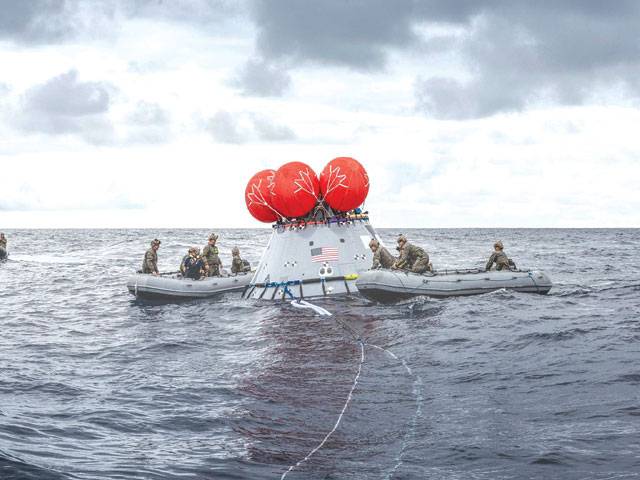ISLAMABAD-For Artemis missions, NASA’s Orion spacecraft will be traveling at 25,000 mph as it reenters the Earth’s atmosphere, which will slow it down to 325 mph. Parachutes will then bring it down to about 20 mph. During the parachute deploy sequence, hardware will be jettisoned and fall into the Pacific Ocean below while the recovery ship awaits near the landing site. Keeping the ship and recovery team safe is critical to mission success. The Landing and Recovery team, led by Exploration Ground Systems at NASA’s Kennedy Space Center in Florida, is prepared to safely recover Orion and attempt to recover the jettisoned hardware. A four-person team of engineers from NASA’s Johnson Space Center in Houston will also be onboard the U.S. Navy recovery ship with a “Sasquatch” — no, not an elusive hairy creature, but a very important software tool created specifically for Orion. “Sasquatch is the software NASA uses to predict large footprints — that’s why we call it Sasquatch — of the various debris that is released from the capsule as it is reentering and coming through descent,” said Sarah Manning, a Sasquatch operator and aerospace engineer from the Engineering Directorate at Johnson. The hardware jettisoned, or released, during parachute deployment includes drogue and pilot parachutes that help initially slow and stabilize Orion, along with other elements necessary for the parachute sequence to deploy. The primary objective for the Sasquatch team is to help get the ship as close as possible to recover Orion quickly. A secondary objective is to recover as much hardware as possible.
Thursday, April 18, 2024
Recovering NASA’s Orion spacecraft

Stefanos Tsitsipas advances in Barcelona
4:19 PM | April 18, 2024
Met Office predicts more rains across country till April 29
2:51 PM | April 18, 2024
Punjab changes school timings for summer season
1:55 PM | April 18, 2024
Enemies of Pakistan are unable to digest investment in the country: Ataullah Tarar
1:29 PM | April 18, 2024
IHC restores Bushra Bibi's appeal for shifting to Adiala Jail from Bani Gala
1:24 PM | April 18, 2024
Hepatitis Challenge
April 18, 2024
IMF Predictions
April 18, 2024
Wheat War
April 18, 2024
Rail Revival
April 17, 2024
Addressing Climate Change
April 17, 2024
Justice denied
April 18, 2024
AI dilemmas unveiled
April 18, 2024
Tax tangle
April 18, 2024
Workforce inequality
April 17, 2024
New partnerships
April 17, 2024
ePaper - Nawaiwaqt
Advertisement
Nawaiwaqt Group | Copyright © 2024





